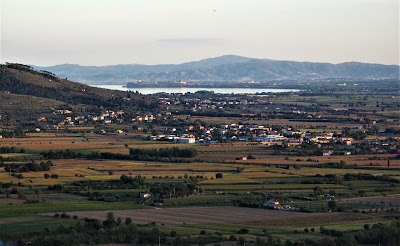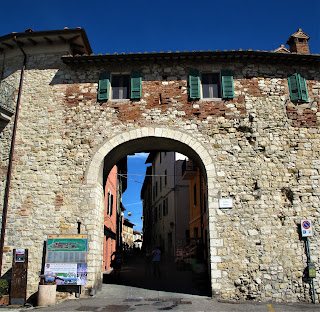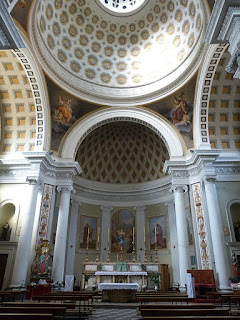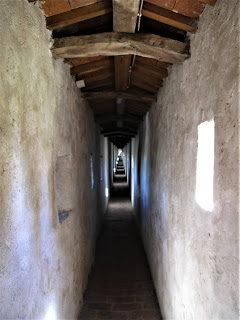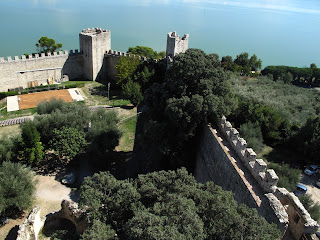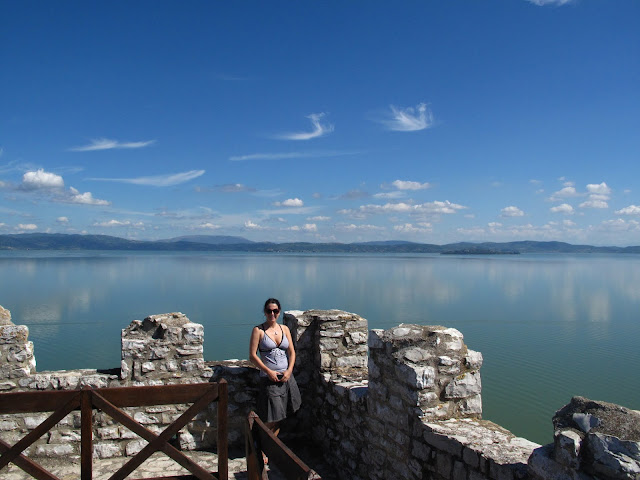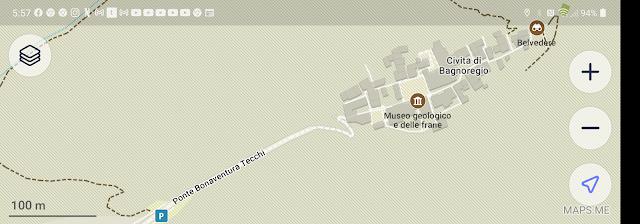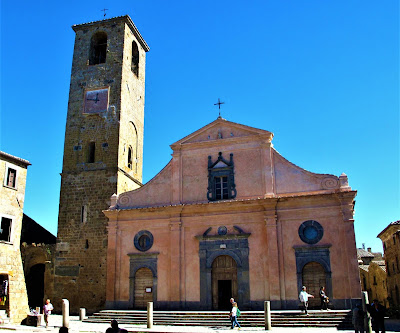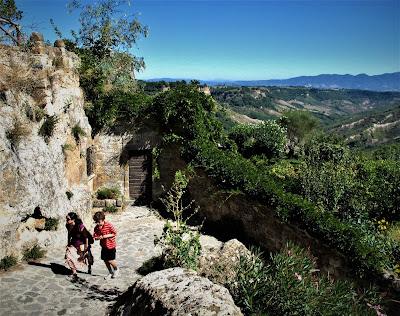Somewhere between Ghost Town and Fairy Tale Village floats Civita di Bagnoregio. Referred to as "the Dying Town," Civita di Bagnoregio is a medieval wonderland lost in time...
Central Italy has no shortage of off-the-beaten-path hilltowns to discover. The Provinces of Tuscany, Umbria and Lazio meet at the Valle dei Calanchi or Valley Of The Badlands and is home to one of Italy's most beautiful villages, Civita di Bagnoregio. Civita is one of my favourite hilltowns for many reasons. Civita is situated very close to Orvietto in Umbria and makes a great day trip. Full of Medieval architecture, smack in the middle of a stunning canyon and is completely car-free and under-touristed. Civita is Italy in the raw!
Italian Poet Fillipo Paparazzi once wrote that Civita di Bagnoregio was "an island bravely poised in the middle of the air, on the top of a truncated cone, above the immense abyss..."
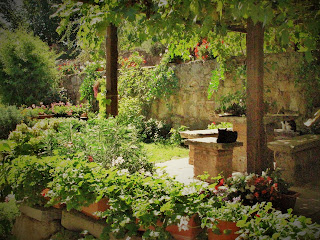 |
| Maria's Garden |
Built upon a foundation of clay that is slowly eroding every year, Civita was founded by The Etruscans over 2,500 years ago, much like the town of Pitigliano. Much of the town has already slid into the canyon below, and the residents moved to the modern city of Bagnoregio, which used to be a suburb. There are less than 20 permanent residents living in Civita today. Most of the well-cared-for homes in the village are weekend escapes for city folks. There are more cats than inhabitants lounging in the shady gardens.
Getting to Civita di Bagnoregio which lies two hours north of Rome, is simple. The closest large town to Civita is Orvieto in Umbria. There are busses leaving from Orvieto to the Bagnoregio bus station several times a day, and then it's a 20-minute walk to the bridge that crosses the canyon to Civita. Alternately, there is a shuttle bus during tourist season that leaves the Bagnoregio bus station and drops you at the bridge crossing. If you arrive by car, drive through Bagnoregio's main drag following the yellow street signs to Civita's parking lot. There is a booth where you can pay to cross the toll bridge (in 2020, it is €5) and also where you can pay for hourly parking.
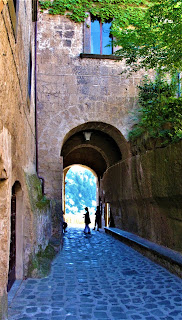 A pedestrian footbridge stretches across the vast canyon, leading upward to the Roman archway, which is the village's entrance. Stepping through the Porta Santa Maria arch, you walk along the Etruscan road that was carved 2,500 years ago. These ancient cobbled roads had led to Rome before Rome WAS Rome!
A pedestrian footbridge stretches across the vast canyon, leading upward to the Roman archway, which is the village's entrance. Stepping through the Porta Santa Maria arch, you walk along the Etruscan road that was carved 2,500 years ago. These ancient cobbled roads had led to Rome before Rome WAS Rome!
Civita is a delightful place to spend an afternoon-WITH NO AGENDA.
There are no main sights to see in Civita di Bagnorgio. The delight is to stroll the
hamlet, take a million pictures, have lunch & a coffee and perhaps stop to pet the
many, many cats here. The village is
tiny, so it doesn't take long to wander around it. Enjoy the Etruscan
carvings, the medieval layout of the town, the remains of the renaissance
palace and the outdoor laundry sinks, the locals' meeting-place for decades.
On the main piazza, check out the church of San Donato. You will notice round columns in front of the church. These were once the foundation of an Etruscan temple, then a Roman temple and finally a Christian cathedral. Peeking inside the church is worth a moment to see the beautiful and haunting 15th-century crucifix carved out of pear wood.
As you stroll the village and take in the views, wander the small alleyways, admire the display of flowers that explode from every window box and staircase.
At the end of the town, the main street begins to slowly wind downhill. The road eventually turns into a trail that villagers used to travel to attend their farms on the valley floor. If you descend along the pathway, you begin to see caves carved out by the Etruscans 2,500 years ago! These caves were used as wine cellars and storage for farm equipment until just a few decades ago.
One cave has a gate in front of it, sealing it off, but you can peer inside. This is the Cappella del Carcere or The Chapel of The Incarcerated. This was most likely an Etruscan tomb, but in Medieval times it was used as the city's jail. This humble "chapel" is a special place of worship for the few remaining Civita residents and is the town's starting point for religious processions.Now that you have worked up an appetite exploring Civita, it's time for a meal!
There are many choices for food in Civita. I decided to stop for a delicious lunch at a small Osteria off the main piazza called La Cantina di Arianna. Delicious "bruschetta" (toasted bread
with local olive oil) and homemade salumi, and of course, the local Orvietto Classico white wine
is the best! Check out my blog post for more information on Wines to Try in Umbria.
My son had so much fun feeding the cats and their little kittens that gathered under our table during lunch. It seems like outdoor dining in hill towns often means you will have little furry guests joining you for your meal.
Civita di Bagnoregio had soared in popularity since I first visited it in 2013 when it was just a sleepy little ghost town on the Tuscan-Umbrian border. I recommend planning your visit to Civita earlier in the day or later in the evening, catching the sunset, to avoid the mass tour-bus crowds. Just remember to slow down your pace and enjoy sauntering around this unique place on earth.
Have you been to Civita? What was your impression; a tourist trap or a slice of heaven? Let me know in the comments below!
Follow me on FACEBOOK, INSTAGRAM and BLOGLOVIN' for daily photos and updates! #slowtravel🐌
